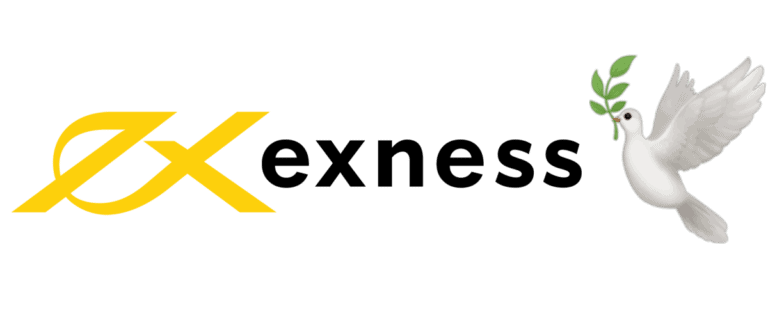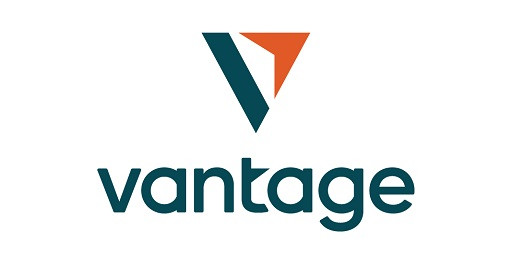In the often volatile world of digital finance, few landmarks stand as stark testimonies to the legitimacy and growth of cryptocurrency as the entry of institutional giants. Among them, Fidelity Investments’ venture into Bitcoin is not just a pivot in their strategic portfolio but a tremor felt across the investment landscape. For investors, cryptocurrency enthusiasts, and financial advisors, Fidelity’s move is not just a mere attendance to the crypto-party—it’s akin to setting up their headquarters there, demanding attention, and signaling a new era in digital finance.
Charting Fidelity’s Course into Bitcoin
Fidelity didn’t wander into the Bitcoin wilderness; it charted its course meticulously. In 2017, the investment firm started allowing clients to view cryptocurrency holdings alongside more traditional assets. It was a quiet acknowledgment of a then-rising force—cryptocurrency. But Fidelity’s moves were anything but capricious. They unfolded a systematic strategy, integrating digital assets into their diverse range of investment platforms, underpinned by a profound understanding of this novel economic frontier’s potential impact and risk.
At the company’s helm, Abigail Johnson, Chairman and CEO of Fidelity Investments, cast a visionary eye, “We see the potential for blockchain technology to change the fundamental nature of many industries, including financial services.” This visionary validation from a financial stalwart laid the groundwork for a series of strategic investments in Bitcoin and its underlying technology.
The Bitcoin Bounty: What Lured Fidelity In?
Fidelity’s leap into the Bitcoin fray wasn’t a headfirst gamble but a calculated bet, hedged against changing tides in the investment world. The allure of cryptocurrency, often a mystery to traditional investors, is multifaceted. Crypto offers a new frontier of uncorrelated assets, potential for diversification, and a hedge in an ever-evolving economic climate. Additionally, Bitcoin’s emergence as a store of value akin to gold, albeit in a digital form, has caught the eye of Fidelity in its pursuit of novel investment vehicles.

Abigail Johnson states, “The markets are starved for new ideas and approaches.” This acknowledgment captures Fidelity’s vision and the broader disillusionment with the traditional financial system, which cryptocurrency has sought to address.
Fidelity’s and the Investor’s Dilemma
Fidelity’s decision to back Bitcoins speaks volumes about how it’s seen in the institutional world; as Michael Novogratz, CEO of Galaxy Digital, notes, “Fidelity’s foray into Bitcoin signals a shift in how institutional investors perceive digital assets, moving from skepticism to strategic diversification.” But with this shift comes a new risk. The volatility of Bitcoin is no secret and poses a significant challenge for conservative investors. Fidelity’s entry into Bitcoin doesn’t trivialize this fact, but it does provide validation and infrastructure that could help mitigate risk.
For investors looking to bolster their portfolios with a touch of crypto, Fidelity’s involvement signals a path with reduced barriers to entry and promises of security and reliability, promises Michael does not take lightly. It doesn’t guarantee success but provides a launchpad for a more educated gamble in an uncertain market.
The Ripple Effect: Industry’s Response to Fidelity’s Play
Fidelity’s Bitcoin has wider repercussions. The company’s scale and reputation are second to none, and the industry monitors its movements keenly. After Fidelity’s entry, financial advisors who once dismissed cryptocurrencies are now recalibrating their strategies. The once-novel discussion point at boardroom meetings is gaining ground as a serious asset class meriting attention and allocation.
Tom Lee, Managing Partner and the Head of Research at Fundstrat Global Advisors, succinctly captures the mood, “The entry of large institutional players like Fidelity into the cryptocurrency space is a validation of the technology and a sign that it’s not going away anytime soon.” This validation paves the path for further institutional involvement, priming the market for more significant shifts.
SEO Integration: Unlocking Fidelity’s Bitcoin
Investors flock to the web for insights, often typing ‘Fidelity Bitcoin’. The SEO strategy should address Fidelity’s foray into Bitcoin and the broader implications for institutional investments and the cryptocurrency market. By weaving in keywords such as ‘institutional investments’ and ‘cryptocurrency market‘, this content can serve as a beacon to the curious investor looking for a guiding light in the crypto storm.
Using backlinks to reputable sources and carefully curating technical yet accessible content can further elevate this piece, nudging it up in the search results. Always with the reader in mind, this approach doesn’t compromise depth for visibility but blends the two into a potent resource.
Fidelity’s Bitcoin Odyssey
Fidelity’s inclusion of Bitcoin in its investment narrative is no footnote; it’s set to be a chapter. Theirs is a story of the foresight and adaptability of an industry heavyweight willing to test new waters. For investors and enthusiasts, it’s a tale of legitimacy and new opportunity in a market that is less the future and more the present. Fidelity didn’t merely dip its toe into the crypto pool; it helped shape its boundaries and potential. And in doing so, it changed the conversation, not just around Bitcoin, but around what’s next for the industry and the investors who depend on its astute judgments.
Guide to Investing in Fidelity ETFs
Fidelity is a well-recognized name in the investment and financial services industry. It boasts a wide range of ETFs that cater to various investment strategies and goals. Understanding and taking advantage of Fidelity ETFs can be a smart move for those looking to start or further their investment journeys. This comprehensive guide is tailored to investors, financial advisors, and ETF enthusiasts keen to gain insights on Fidelity ETFs and learn the step-by-step process of investing in them.
Introduction to Fidelity ETFs
Fidelity ETFs, also known as exchange-traded funds, offer the advantage of diversification, low costs, and tax efficiency. They are investment funds traded on a stock exchange, much like stocks. Investable assets within Fidelity ETFs cover various sectors, market capitalizations, and geographic regions. With Fidelity’s reputation for quality and innovation, their ETF portfolio has become a go-to choice for many retail and professional investors.

The Benefits of Fidelity ETFs
- Diversification: By investing in a single Fidelity ETF, you gain exposure to various securities, spreading your risk.
- Low Costs: Fidelity ETFs usually have lower expense ratios than mutual funds, so you keep more investment returns.
- Liquidity: The ability to buy and sell shares on the stock market provides investors with liquidity, sometimes even intraday.
- Tax Efficiency: ETFs are known for tax efficiency due to in-kind creation and redemption of underlying assets and limited capital gains distributions.
Choosing the Right Fidelity ETF
Before investing in Fidelity ETFs, you must pick the funds that align with your investment objectives.
Research Different Fidelity ETF Options
Your first step should be to research the range of Fidelity ETFs available. Look into each fund’s investment strategies, historical performance, holdings, and expense ratios. Fidelity’s website and independent ETF research platforms can provide valuable insights into each ETF’s attributes.
Consider Investment Goals and Risk Tolerance
Your investment goals and risk tolerance should guide your decision-making process. If you’re investing for retirement, focus on Fidelity ETFs that track broad market indices for long-term growth. For short-term goals, consider sector-specific ETFs or those focused on income generation.
Opening an Account
With Fidelity’s ETFs chosen, the next step is to open a brokerage account to start investing.
Steps to Open a Brokerage Account with Fidelity
- Visit Fidelity’s website and locate the “Open an Account” or “Get Started” button.
- Choose the type of account you want to open. Depending on your needs, this could be an individual account, a joint account, an IRA, or a trust account.
- Enter personal information, including your name, address, social security number, and employment details.
- Review and agree to Fidelity’s terms and conditions.
- Fund your account or set up a plan for future contributions.
Setting Up Account Preferences and Funding Options
Customize your account preferences, such as enabling dividend reinvestment or setting alerts for specific ETFs. You can fund your Fidelity account through ACH transfers, wire transfers, or mail a check. Automatic investing plans can also be set up for recurring investments in your chosen Fidelity ETFs.
Making Your First Investment
Once your account is funded, you can invest in a Fidelity ETF.
How to Select the Desired Fidelity ETF
Log in to your Fidelity account and use the platform’s search tools to find the ETF you want to invest in. Consider the current market conditions and ensure that the ETF you choose best suits your investment goals and strategy.
Placing a Buy Order
- Navigate to the order entry page for the chosen Fidelity ETF.
- Choose whether to place a market, limit, or other order types.
- Enter the number of shares you want to purchase or the dollar amount you wish to invest.
- Review the details of your order, including the expected cost and any associated commission fees.
- Submit your order, and your investment in the Fidelity ETF will be executed.
Monitoring and Managing Investments
After making your investment, active monitoring and management can help you stay on track with your financial goals.
Tracking Performance and Market Trends
Use Fidelity’s online tools and resources to track your ETF’s performance. Monitor how your investment is doing against the broader market and stay informed about economic and market trends that may impact its performance.
Rebalancing the Portfolio as Needed
Periodically review your portfolio’s performance and rebalance if necessary. Rebalancing ensures that your investment mix aligns with your risk tolerance and objectives. Fidelity provides tools and customer service support to assist with this process.
How to Find Fidelity ETF Lists
Exchange-traded funds (ETFs) are a popular investment vehicle known for their versatility and ease of trading, much like individual stocks. Fidelity, one of the largest investment firms in the world, offers a range of ETFs covering different sectors and investment styles. If you’re an investor or finance professional looking to tap into or advise on Fidelity’s offerings, you’ll need to know how to access their comprehensive ETF lists. This guide walks you through the process step by step.
Introduction to Fidelity ETFs
Fidelity ETFs are powerful tools for investors. They combine the flexibility of stock trading with the diversification and low-cost advantages typically found in mutual funds. With the proper knowledge and a plan, investing in ETFs can help you reach various financial goals. By accessing Fidelity’s ETF lists, you can explore investment opportunities that align with your strategy and risk tolerance.
The Importance of Accessing Fidelity ETF Lists
Understanding and researching Fidelity’s ETFs is crucial for building a well-rounded investment portfolio. Accessing Fidelity’s ETF lists is the first step in the due diligence process, providing information to help you identify funds that suit your investment objectives.
Steps to Access Fidelity ETF Lists
1. Visit the Fidelity Website
Type ‘Fidelity’ into your browser’s search bar and click on the official website link. If you’re an existing Fidelity customer, log in to your account. If you still need to, you can create an account or engage with the non-member resources, which offer substantial information on ETFs.
2. Navigate to the “ETFs” Section
The Fidelity website’s layout may vary, but you can usually find the “ETFs” section from the main navigation menu on the home page. Look for the “Investments” or “Products & Services” category and then search for a tab labeled “ETFs.”
3. Explore the “ETF Product List
Once in the ETF section, find the “Product List,” which typically features a menu of all available ETFs. This list will be your starting point for exploring Fidelity’s ETF offerings.
4. Filter and Sort Options
Fidelity’s ETF Product List usually comes with sorting and filtering tools to help you narrow your search. You can filter by asset class, investment strategy, sector, region, etc. Use these tools to focus on the types of investments that interest you most.
5. Understanding ETF Details and Performance Metrics
Each ETF on the list will feature a range of details, including the fund name, ticker symbol, expense ratio, and historical performance. Take your time to understand what each metric means. Performance alone isn’t the sole factor in choosing an ETF, but it is essential.

Benefits of Using Fidelity ETF Lists
Diversification Options
Fidelity offers ETFs that provide exposure to a diverse set of investment areas, which can help reduce the overall risk in your portfolio. Using their lists, you can build a diversified portfolio without the hassle of selecting individual stocks or bonds.
Performance Tracking
Fidelity ETF lists are updated regularly, so you can track how your investments are performing against benchmarks and other funds. This allows you to assess the viability of your ETFs concerning your investment strategy.
Investment Decision-Making Support
With a clear view of Fidelity’s ETF offerings, you can make informed investment decisions that align with your financial goals and risk appetite. The lists clarify the different types of ETFs available and serve as a launching pad for more profound research into potential investment opportunities.
How to Choose the Best Fidelity ETF
Regarding growing your wealth through investment, Exchange-Traded Funds (ETFs) have become famous for their diverse holdings, low costs, and ease of trading. However, the multitude of options available can be overwhelming. For those specifically interested in Fidelity ETFs, this guide is designed to help you take a structured approach to picking the best one for your portfolio and financial goals.
Understanding Fidelity ETFs
Before you jump into the selection process, it’s crucial to understand what you’re working with. Fidelity offers a broad range of ETFs – from sector-specific to globally diversified funds. It’s one of the largest ETF providers in the world, giving you plenty of choices to align with your investment strategy.
The Basics of ETFs
ETFs are investment funds traded on stock exchanges, much like stocks. They provide:
- Exposure to various assets.
- I am often mirroring the performance of popular indexes like the S&P 500.
- Nasdaq.
- Dow Jones.
Fidelity’s Philosophy
Fidelity’s ETF offerings generally align with their focus on research and customer-driven innovation. These funds are designed to meet various investor needs, from passive, long-term strategies to those geared toward a specific market opportunity or sector.
Factors to Consider
When sifting through Fidelity’s ETF options, consider the following factors to make an informed choice:
Expense Ratio
The expense ratio is the annual fee you pay to the fund to manage your investment. Lower expense ratios can significantly impact your returns over time, so looking for cost-efficient options is essential.
Asset Class
Determine what asset classes (stocks, bonds, commodities, etc.) you want to invest in. Fidelity offers ETFs across various classes, each serving different investment strategies.
Performance History
Past performance doesn’t dictate future results, but it does provide a window into how a fund has managed through different market conditions. A consistent, long-term performance history is a positive indicator.
Investment Objectives
Consider your investment goals and which Fidelity ETFs align with those objectives. Are you looking for growth, income, or capital preservation? Ensure your chosen fund works toward the same end.
Research and Comparison
To compare different Fidelity ETFs, utilize online resources like Fidelity’s website, financial news sites, and independent ETF research platforms. Look at data such as average annual performance over various time horizons, historical tracking errors, and the fund’s benchmark index to ensure it meets your expectations.
When comparing, also take note of any tax implications, as different funds may have dissimilar distributions that could affect your tax burden.
Making an Informed Decision
The final step is to combine it to make the best decision for you. Set clear investment goals and objectives. Are you investing for retirement, a significant purchase, or to grow a college fund? Your time horizon, risk tolerance, and liquidity needs will guide you toward the most appropriate ETF.
Consulting with a financial advisor can further enhance your decision-making process. They can offer personalized advice, especially if your financial situation is complex or you’re dealing with large sums of money.
How to Invest in Fidelity ETF Funds
Fidelity is renowned for being a pioneer of the brokerage industry, with a range of investment tools and services widely recognized for their quality, including a suite of exchange-traded funds (ETFs). If you’re new to investing and considering Fidelity ETFs as part of your strategy, this step-by-step guide will help you begin your investment journey. From understanding what ETFs are to purchasing your first Fidelity ETF fund, this guide will demystify the process and set you on the path to building a balanced portfolio.
Step 1: Understanding Fidelity ETF Funds
Before you invest, it’s crucial to understand what you’re buying into. An ETF is a fund that holds multiple underlying assets, such as stocks or bonds. Similar to individual stocks, ETFs are traded on stock exchanges. They offer diversified holdings of mutual funds and trading features of stocks.
Overview of Fidelity ETFs
Fidelity offers a broad spectrum of ETFs, including equity, fixed-income, and sector-based funds. These funds are known for their approachable expense ratios and high-quality, low-cost investment strategies.
The Advantages of Fidelity ETFs
When investing with Fidelity’s ETFs, you benefit from several advantages: tax efficiency, intraday trading, and diversification benefits.
Types Available
Fidelity provides access to an extensive list of ETFs to suit different investment preferences. Whether you are looking for a fund that tracks the S&P 500, one that focuses on technology stocks, or even emerging market bonds, Fidelity has a fund for that.
Step 2: Researching Fidelity ETFs
Responsible investing means doing your homework before you buy. Here’s how you can research Fidelity ETFs effectively.
Performance
Look beyond past performance to understand the ETF’s behavior across various market conditions. Compare it to the benchmark it tracks over different periods.
Expense Ratios
The expense ratio is critical in ETF investing, impacting your returns. Fidelity’s ETFs are known for their low expense ratios, but always check to ensure you understand the cost.
Holdings
Fidelity provides extensive information about the holdings within their ETFs. Understanding what the fund invests in can give you a clear picture of the level of risk and the sector or asset class focus.
Step 3: Opening a Fidelity Account
To invest in Fidelity ETFs, you must have a brokerage account with Fidelity. Opening one is straightforward.
Visit Fidelity’s Website
Navigate to Fidelity’s official website and locate the ‘Open an Account’ section.
Choose Your Account Type
Fidelity offers several account types, such as individual brokerage accounts, retirement accounts (IRAs), and custodial accounts. Select the one that fits your investment needs.
Complete the Application
Fill out the required information, including personal details, employment status, financial information, and investment goals.
Step 4: Purchasing Fidelity ETF Funds
With your account set up, you can purchase your chosen Fidelity ETF funds.
Fund Selection
Use the search tools within the Fidelity platform to find the ETF you’ve researched. Depending on the specific fund, check for additional buying requirements or fees.
Placing an Order
Decide the number of shares you want to buy and use the platform to place your order. You can choose different order types, such as market orders for immediate execution or limit orders to control your price.
Review and Confirm
Double-check your order details and confirm the purchase. When you receive a trade confirmation, your order has been executed.
Step 5: Monitoring and Managing Investments
Investing is not a set-it-and-forget-it endeavor. Regularly monitoring your Fidelity ETFs is essential.
Use Fidelity’s Tools
Fidelity provides a range of tools to track your investments. You can set up alerts, use performance analysis, and stay informed about their market and fund research.
Knowing When to Hold or Sell
Periodically review your investment’s performance and reassess your financial goals. Be prepared to sell if the investment no longer aligns with your strategy or your investment thesis changes.
Consider Rebalancing
Rebalancing involves buying and selling assets to maintain your desired asset allocation. This can help you keep risk within your comfort level.
Fidelity ETF vs. Vanguard ETF – A Comparative Analysis
Exchange-traded funds (ETFs) have revolutionized the way people invest by providing a cost-effective, diversified, and easily tradable way to gain exposure to various asset classes, market sectors, or investment strategies. Among the many ETF providers, two industry giants stand out: Fidelity Investments and The Vanguard Group. Investors are often left pondering which one is the better fit for their portfolios.
This detailed guide will dissect the differences between Fidelity ETFs and Vanguard ETFs, helping you make an informed decision based on your investment goals and portfolio strategy.
ETFs are funds that trade on stock exchanges, much like individual stocks. They combine the flexibility and convenience of stock trading with the instant diversification of mutual funds. Both Fidelity and Vanguard represent top choices for investors looking to benefit from the structure of ETFs, but each has its characteristics that appeal to different investors.
Fidelity is renowned for its innovation and customer-focused solutions. The company offers a broad range of ETFs, covering different investment styles and sectors. On the other hand, Vanguard is known for its low-cost and passive investment approach, offering a plethora of ETFs designed to follow various market indices.
Fidelity ETFs
What Sets Fidelity ETFs Apart
Fidelity’s ETF offerings are far-reaching and have gained popularity primarily due to their no-commission trading and robust asset management backing. Fidelity offers a blend of active and passive strategies, and their ETF lineup includes single-factor, multifactor, and fixed-income ETFs, catering to various investment objectives.
Performance and Track Record
Fidelity has excelled in specific market segments, with a solid performance in actively managed funds. This performance may be attributed to Fidelity’s research capabilities and focus on strategic investment. Their passive funds also tend to be competitive, particularly regarding liquidity and low tracking error.
Expense Ratios and Fees
Fidelity has been a strong proponent of competitive pricing. While it offers various share classes that can impact expense ratios, its overall approach to keeping costs low has resonated with cost-conscious investors.

Investment Options and Sectors Covered
Fidelity’s ETF lineup spans domestic and international equities, fixed income, and commodities. It also offers offerings for markets such as real estate, technology, and health care, providing a broad spectrum of options for investors.
Vanguard ETFs
Vanguard’s Investment Philosophy
Vanguard’s approach to investing revolves around lowering costs, providing diversified exposure, and offering long-term investment strategies. Their ETFs largely follow a passive indexing approach and are designed to provide investors with the returns of the broader market rather than attempting to beat it through active management.
Performance in Comparison
Vanguard’s ETFs are typically designed to match the performance of well-known indices and have traditionally done so with low tracking errors. While performance is tied closely to the market being tracked, Vanguard’s low-cost structure and efficient index tracking have often resulted in favorable performance relative to their peers.
Expense Ratios and Fees Comparison
One of Vanguard’s key selling points is its low-cost structure. Vanguard is known for its commitment to keeping expenses for its mutual funds and ETFs as low as possible, providing cost-efficient options for long-term investors.
Investment Options and Diversity
Vanguard’s ETF selection includes various options, from broad market index funds to more specialized sectors. Their funds tend to cover all the major asset classes, allowing investors to build a diversified portfolio under one brand.
Comparative Analysis
Cost Comparisons: Fidelity vs. Vanguard
Regarding cost, Vanguard has a reputation for being one of the most cost-effective investment options available. They are typically the industry leader in offering low-cost funds. Fidelity, while also offering competitive pricing, may only sometimes match Vanguard’s rock-bottom expense ratios.
Performance Comparison
Both companies have shining examples within their ETF families in terms of performance. Fidelity’s active management has led to some standout performers, while Vanguard’s meticulous indexing approach has resulted in consistent returns that often track closely to the benchmark indices.
Investment Options and Diversity
Both Fidelity and Vanguard offer various investment options, though they may differ in the breadth and depth of selections. Fidelity’s more extensive selection of actively managed ETFs provides more variety, while Vanguard’s strength lies in its passive index funds for long-term, broad market exposure.
Investor Suitability and Preferences
Fidelity may be more appealing to investors looking for a mix of active and passive strategies and niche sector exposure. With its passive solid index offering, Vanguard suits the buy-and-hold investor looking for low-cost, broad market exposure with minimal ongoing management.
How to Choose the Best Fidelity ETF for Retirement
When you’re planning for retirement, you know that every decision counts. Exchange-traded funds (ETFs) have become famous for retirement portfolios due to their low costs, tax efficiency, and ease of use. Fidelity, a well-respected name in the financial services industry, offers a range of ETFs that cater to the needs of long-term investors and retirees. But with the many options available, how do you make the right choice? This guide will walk you through selecting the best Fidelity ETF for your retirement plan.
Understanding Fidelity’s ETFs and Their Benefits
Fidelity Investments has been a leader in the financial industry for decades, and its range of ETFs reflects its commitment to innovation and value.

Benefits of Fidelity ETFs for Retirement
- Low Costs: Fidelity is known for offering low-cost investments, which are essential for retirement savings. Every dollar saved in fees translates to more money in your account.
- Tax Efficiency: Fidelity’s ETFs are designed to be tax-efficient, helping you maximize your retirement savings.
- Ease of Use: With their user-friendly platform, investing in Fidelity ETFs can be as easy as a few clicks, simplifying the management of your retirement assets.
- Options: Fidelity offers a broad selection of ETFs, catering to various investment strategies and goals, giving you many choices to fit your retirement needs.
- Quality: Fidelity is also known for its research and due diligence, reflected in its ETF offerings’ quality.
Factors to Consider When Choosing a Fidelity ETF for Retirement
There are several key factors to remember when deciding which Fidelity ETF is best for your retirement plan.
Expense Ratios
One of the most critical factors for long-term investors is the expense ratio or the annual fee you pay to invest in the ETF. Choosing an ETF with a low expense ratio can significantly impact your returns.
Performance History
While past performance does not indicate future results, an ETF’s track record can offer insights into its potential for providing stable growth for your retirement investments.
Diversification
Your ideal ETF for retirement will offer broad diversification. Look for ETFs that provide exposure to a wide range of asset classes, helping you spread your risk effectively.
Risk Tolerance
Consider your risk tolerance when selecting an ETF. For retirement, a long-term investment, you might still want to invest in growth-oriented funds, but you’ll want to balance that with some less risky, stable investments.
Research and Comparison
Fidelity offers many resources to help you research and compare their ETF options.
Using Fidelity’s Tools
The Fidelity website provides a wealth of tools and calculators for analyzing potential ETF investments. Use these to assess the ETF’s performance and see how it fits into your overall retirement plan.
Comparing Different ETF Options
Fidelity offers a wide range of ETFs, so it’s crucial to compare them against the factors mentioned above. Use Fidelity’s platform to compare the ETFs’ performance, fees, and other characteristics side-by-side.
Consultation with a Financial Advisor
While Fidelity’s tools can be beneficial, there’s no substitute for a one-on-one consultation with a financial advisor. An advisor can help you integrate your ETF selections into a comprehensive retirement plan and provide personalized advice based on your situation.
Importance of Seeking Professional Advice
A financial advisor can provide:
- A holistic view of your retirement plan.
- Considering not only your investments but also your income needs.
- Tax situation.
- Other factors are crucial for a successful retirement.
Reinvesting Dividends in Fidelity ETFs: A Step-by-Step Guide to Passive Income Growth
For savvy investors looking to bolster their portfolio and achieve more significant passive income, reinvesting dividends in Exchange-Traded Funds (ETFs) is a powerful strategy. Notably, Fidelity Investments offers a range of ETFs with enticing potential for capital appreciation and regular dividend payments. This guide will walk you through the simple process of setting up a dividend reinvestment plan within Fidelity’s framework, allowing you to harness the power of compound returns and passive income. Whether you’re new to the investment world or a seasoned stakeholder looking to optimize your strategy, this guide will equip you to make the most out of your Fidelity ETFs.
Understanding Fidelity ETF Dividend Reinvestment
Before we dive into the actionable steps, it’s crucial to understand how Fidelity ETFs handle dividend reinvestment. When an ETF in your portfolio pays dividends, Fidelity allows you to reinvest those dividends automatically into additional shares of the issuing fund. This is known as the Dividend Reinvestment Plan (DRIP). This feature simplifies reinvesting dividends and leverages the power of compound interest to grow your holdings over time.
Steps to Reinvest Dividends in Fidelity ETFs
- Setting up a Fidelity Investment Account
If you still need to get a Fidelity investment account, the first step is to sign up. Visit the Fidelity website or contact customer service to set up your account. Ensure you choose an account type supporting DRIP, such as a traditional brokerage account or an Individual Retirement Account (IRA).
- Enrolling in the Dividend Reinvestment Plan
Once your account is set up, you must enroll in the DRIP for the specific ETFs within your portfolio. This can be done online, through the Fidelity website or mobile app. Look for the option to manage your accounts and choose the DRIP enrollment for each eligible ETF.
- Selecting the ETFs for dividend reinvestment
Consider which Fidelity ETFs you want to include in the DRIP. Look for funds with a strong dividend payment track record and a performance history that aligns with your investment goals. Be mindful of any fees associated with the DRIP, as these can vary by fund.
- Monitoring and managing reinvested dividends
With your DRIP set up, dividends from your selected ETFs will be automatically reinvested. Review your account regularly to track the growth in the number of shares you own and the dividends being reinvested. You can manage your DRIP settings at any time, adjusting the frequency of reinvestment or opting out of the plan if needed.
Benefits of Dividend Reinvestment in Fidelity ETFs
Increased Compound Returns
By reinvesting your dividends, you buy more shares in the ETF, which results in larger future dividend payments. Thanks to the compounding effect, these additional shares can significantly boost your overall return over time.
Dollar-Cost Averaging Benefits
DRIP allows you to practice dollar-cost averaging without any additional effort. By automatically reinvesting dividends, you’re effectively buying more shares when prices are lower and fewer when prices are higher, which can lower the average cost per share over the long term.
Potential for Long-Term Wealth Accumulation
Combining compounding and dollar-cost averaging strategies can lead to substantial wealth accumulation over a long investment horizon. Reinvesting dividends is a passive way to grow your portfolio consistently, aligning with a buy-and-hold investment philosophy.
Navigating Fidelity ETF Trading Fees
Understanding the intricacies of trading fees can significantly impact your investment approach and, ultimately, your bottom line in the realm of exchange-traded funds (ETFs). Fidelity is a critical player in this space, offering various investment products and services. For investors or traders within Fidelity’s ecosystem, breaking down the ETF trading fees is crucial to making informed decisions. Whether you are a seasoned investor or just starting, this guide will equip you with the knowledge to master ETF trading fees at Fidelity.
Understanding ETF Trading Fees at Fidelity
ETF trading fees can be multispectral, encompassing more than the upfront commission cost. It is essential to dissect these expenses to comprehend their collective effect on your investments. In general, Fidelity charges a standard commission fee for each ETF trade. These fees vary depending on factors such as the size of your holdings or your account type.
Beyond the commission, there’s the expense ratio, a recurring fee deducted from the fund’s assets to cover costs. Unlike a commission, which is a one-time cost, an expense ratio can considerably impact your investments over time, particularly regarding long-term buy-and-hold strategies.
Other fees that might be involved include transaction fees, also known as short-term redemption fees, which are levied on the sale of ETFs within a particular period.
Impact on Investment Returns
To understand the significance of these fees, consider an investor who accrues a 7% annual return before expenses over 20 years on a $100,000 investment. If the investment had zero expenses, it would grow to $386,968. However, if annual expenses were 0.5%, the investment would increase to $349,497, a difference of $37,471 or 25% less than if he had invested in a no-fee fund.
In the context of Fidelity’s fee structure, realizing the impact of fees on investment returns is critical to assessing the actual cost of your ETF strategy. Each percentage point difference in fees can reduce your investment returns by a significant margin over time.
Comparing Fidelity ETF Trading Fees
Fidelity’s trading fee structure might be competitive within its niche, but comparing it to its industry peers is prudent. Evaluate what other platforms offer to ensure you get the best deal. In your comparison, look beyond the headline commission fee; consider the whole package, including the expense ratio, minimum investment amount, and tax efficiency.
Furthermore, recognize that the cheapest may only sometimes be the best, as the level of service, investment selection, and platform usability can also be essential factors.
Factors to Consider
When assessing Fidelity’s ETF trading fees compared to others, consider any potential incentives or offers that might be available. Look for deals on fee waivers or other promotions that can drastically change the cost calculus of your investments.
Additionally, keep regulations and fund management practices in mind, as any changes can influence future fee adjustments and, subsequently, your investment performance.
Minimizing Trading Costs
Several strategies can mitigate the effect of trading fees on your investment returns at Fidelity. One approach is to trade less frequently, especially if you have a buy-and-hold strategy. By consolidating trades, you can decrease the amount spent on trading fees over time.
Fidelity also offers a broad range of commission-free ETFs. By strategically selecting funds from this list that align with your investment goals, you can entirely bypass any commission fee, directly boosting your returns.
Another savvy move is to consider Fidelity’s overall package of services. If its research and educational resources lead to better investment decisions and results, the quality of service should also be factored into the value proposition, potentially justifying higher fee structures.
Case Study or Example
To put these cost-discussion points into perspective, imagine two investors. One chooses the lowest-cost ETFs without considering quality or performance. The other investor digs into Fidelity’s commission-free ETF list and finds well-performing funds that match their investment strategy. While the first investor might save on immediate costs, their ETFs may be less tax-efficient or more expensive to manage, which can eat into their earnings.
Although the second investor may pay more upfront for their ETFs, they are likely to enhance long-term performance through a combination of well-performing investments and reduced ancillary costs.
How to Automatically Invest in Fidelity ETFs
Automating your investments can be an effective way to take a hands-off approach to building your financial portfolio. With its robust selection of exchange-traded funds (ETFs), Fidelity offers many investment options for seasoned investors and those just starting. In this guide, we’ll walk you through setting up automatic investments in Fidelity ETFs, allowing you to grow your wealth steadily over time with minimal effort.
Fidelity is a household name in finance, renowned for its expansive suite of ETFs and investment services. The platform’s ETF offerings are particularly attractive due to their low expense ratios and varied investment strategies, catering to the diversity of investor goals and risk appetites. By automating your Fidelity ETF investments, you harness the power of regular contributions to grow your wealth steadily.
Setting Up Automatic Investments
Create a Fidelity Account
The first step to automating your Fidelity ETF investments is to create a Fidelity account if you still need to create one. Whether it’s a brokerage or a specialized ETF account, ensure you have a viable platform to manage your investments.
Choose Suitable Fidelity ETFs
Before automating your investments, you must select the Fidelity ETFs that align with your financial goals and investment strategy. Consider the ETF’s investment objective, performance history, and expense ratio. Fidelity offers various tools and resources to help you make informed decisions, including research reports, performance data, and screening tools.
Set Up an Automatic Investment Plan
Once you’ve chosen your Fidelity ETFs, setting up an automatic investment plan is straightforward. Here are the general steps you’ll need to follow:
- Log into your Fidelity account and locate the ‘Automatic Investments’ section.
- Select the ETFs you wish to contribute to automatically.
- Set the frequency of your contributions (e.g., weekly or monthly).
- Determine the amount to invest with each contribution.
Fidelity also allows you to link your automatic investment plan to another account for seamless funding. Before finalizing your plan, be sure to review and confirm its details to ensure they align with your investment strategy.
Benefits of Automatic Investing in Fidelity ETFs
Automatically investing in Fidelity ETFs presents several key advantages that can bolster your financial position over the long term.
Consistent Contributions
Automatic investments ensure you consistently invest in your ETFs, regardless of market conditions or your schedule. This regular activity encourages a disciplined approach to investing and can help you confidently ride out market volatility.
Dollar-Cost Averaging
With automatic investments, you automatically employ a dollar-cost averaging (DCA) strategy. This approach allows you to buy more shares when prices are low and fewer shares when prices are high, effectively lowering your average cost per share over time.
Time-Saving and Convenience
Automating your investments in Fidelity ETFs is financially beneficial and convenient. Once your plan is set up, you can set it and forget it, freeing you from the administrative burden of manually executing trades regularly.
Tips for First-Time Investors
If you’re new to the investment game, automating your portfolio can seem daunting. However, following these tips can help you get started on the right foot:
Understand ETF Basics
Take the time to understand the basics of ETF investing, including how they work, their advantages, and potential risks. Familiarize yourself with terms like assets under management (AUM), bid-ask spread, and the tracking index or benchmark.
Monitor Investment Performance
Even though you’re automating your investments, it’s essential to monitor the performance of your Fidelity ETFs over time. This can involve reviewing your account statements, tracking your ETFs performing against their benchmarks, and making adjustments as necessary.
Adjust Contributions as Needed
Life is dynamic, and so are your financial needs and circumstances. Periodically review your automatic investment plan and make adjustments if your financial goals or situation change. This flexibility will ensure your automated investments continue to work in your best interest.
Conclusion
Investing in Fidelity ETFs can be a strategic move toward long-term financial growth. By understanding the process of selecting, investing, and managing Fidelity ETFs, you are taking a significant step to secure your financial future. Stay informed, stay patient, and consider consulting with a financial advisor if you have questions or need guidance. With diligence and the right tools, you can make the most of Fidelity ETFs’ opportunities.



















